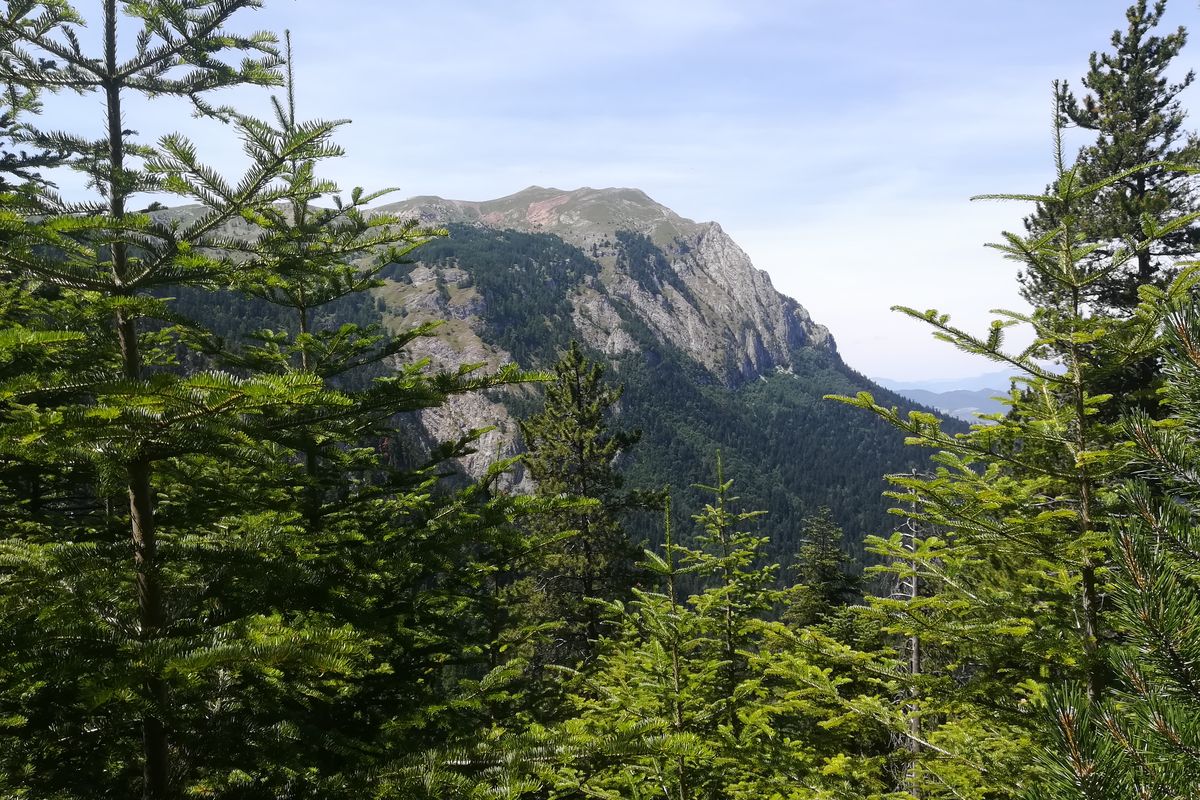
Les terrassettes
Description
- A short distance further up, turn right and go across the earth mound. At the top of this rise, take the track on the right. A few hundred metres after crossing a stream, take the path on the left. From here, follow the stone wall and, further up, follow the water course on the left upstream. At the next intersection, turn right and pass between the stone walls. [When you reach the crossroads, take the track on the left following the sign to Les Terrassettes; this brings you to some abandoned houses]. From the ruins, turn left and then right at the empty houses. At the next crossroads, continue straight ahead to the forest road.
- When you come to the road, turn left. Then, turn right at the boulder and enter the forest. At the intersection, go left to the abandoned house in the place called « les Preis ». Follow the walls. When you come to the track, continue straight across and immediately turn left to the car park in Le Grand Clot.
- Departure : Abbaye de Boscodon, Crots
- Arrival : Abbaye de Boscodon, Crots
- Towns crossed : Crots
11 points of interest
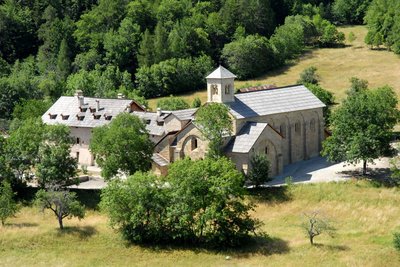
Abbaye de Boscodon - AAAB  Vernacular heritage
Vernacular heritageAbbey of Boscodon
This is the only abbey within the Department. It was built in the twelfth century and has been occupied by a variety of groups over time: the Chalaisian order, the Benedictine order and the families of commendatories; it also housed peasants at one time. Divided into several parts: the part open to the public is the abbey church. It has the distinctive feature of being very airy and has no coloured stained glass windows. This abbey also has a private chapel and a cloister delimiting an interior space.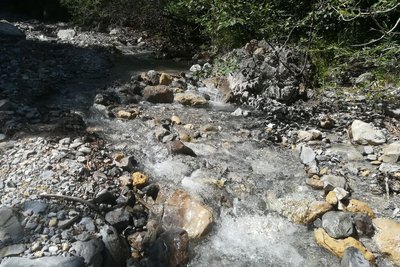
Le torrent du Colombier - Amélie Vallier  Water
WaterLe Colombier mountain stream
This mountain stream is 3 kilometres long. A mountain stream (torrent in French) is a natural water course located in the mountains. The flow regime is characterised by a steep gradient, with a very fast and irregular water flow, ranging from violent flooding to low water levels, leading to significant erosion. As in many mountain streams, numerous sill structures (levels) can be seen in Le Colombier. Their purpose is to slow down the water flow and therefore limit the impact of floods.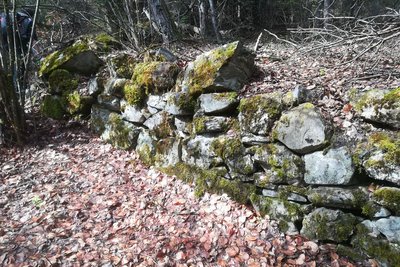
Mur de soutènement - Amélie Vallier  Vernacular heritage
Vernacular heritageRetaining wall
The retaining walls are made from dry stone. In Provence, they are called restanques. They were built in sloping areas to create crop terraces, holding back the earth. At the time, their construction enabled generations of inhabitants to make a living from their land, which was made fertile and workable. Today, a number of researchers and artisans are attempting to re-introduce this age-old technique.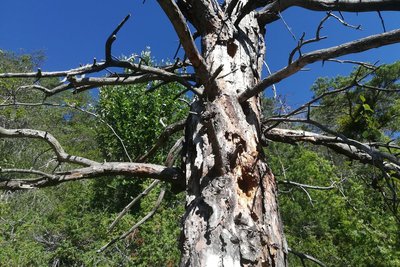
Arbre nicheur - Amélie Vallier  Fauna
FaunaNesting tree
Dead trees are still seen as uninteresting by many people. Scientists do not share this view, seeing dead trees as part of a healthy forest ecosystem. Their presence is vital for safeguarding biodiversity. They are a source of food and habitat for a host of animal and plant species. They provide balance, since even their decomposition feeds the soil and keeps it healthy.
Buse variable - Damien Combrisson - PNE  Fauna
FaunaCommon buzzard
The common buzzard is very common in wooded environments. It is approximately 55 cm long with a wingspan of 1.3 metres. This bird of prey is an excellent hunter and feeds primarily on small mammals, reptiles and amphibians. Their breeding period starts in February. The female lays approximately three or four eggs. During the incubation period, the male brings food for the female and takes her place which she leaves the nest.
Coucou gris - Mireille Coulon - PNE  Fauna
FaunaThe common cuckoo
This is a medium-sized migratory bird, identifiable by its «cuckoo» call heard between April and July in woods and open spaces.
The females seek out the nests of small passerine birds and when she finds a nest with eggs in it, she eats one of them and lays another in its place. In the parasitised nest, the cuckoo chick hatches first and ejects the other eggs from the nest so that it is raised, alone, by its adoptive parents.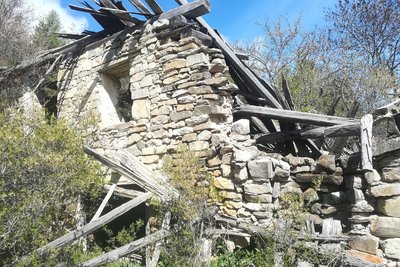
Maison du hameau abandonné - Amélie Vallier  Vernacular heritage
Vernacular heritageAbandoned hamlets
When Boscodon was a densely populated rural hamlet, another hamlet was to be built at the location called Les Terrassettes. The size of the houses - today in ruins - suggest a sizeable population. Numerous tree species such as almond trees were planted around them. This area was essentially inhabited by migrants, most families hailing from Le Laverq en Ubaye. Deserted in 1947, it was long reached by the path which is now part of this trail.
Lézard vert - Mireille Coulon - PNE  Fauna
FaunaGreen lizard
This lizard can be spotted from April to the end of September. It then hibernates throughout the winter. It hunts in densely vegetated areas and mainly feeds on insects and invertebrates.
It is sexually dimorphic: males have a bright blue colouring on the throat and sides of the head during the breeding season. It mates in around May. Males engage in fights in which they may lose their tail, although this has no consequence, as it grows back.
 Water
WaterChamous Field
Unmonitored water source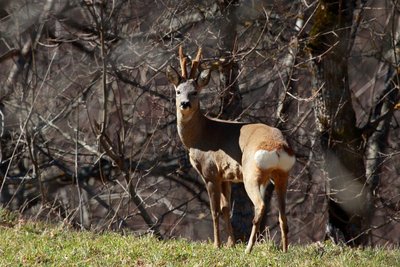
Chevreuil Mâle - Brocard - Albert Christophe - PNE  Fauna
FaunaThe Roe Deer
Elegant, agile and fast, the roe deer is very discreet but leaves the imprint of its frail hooves on the snow or mud up to the alpine level. They can also be spotted by their loud "voice", emitting a powerful bark when disturbed. In the semi-darkness, their mirror, that white spot under the tail in the shape of a heart for the female and a bean for the male, can give them away. When it starts out on life, the fawn is covered in white spots that camouflage it. This "bambi" often lies on the grass. If you find one, remember not to touch it: it hasn't been abandoned.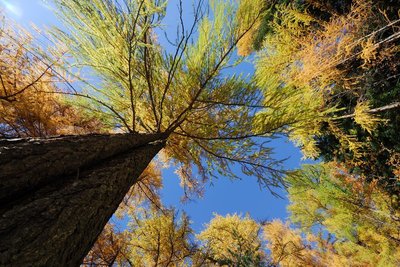
Mélèze - Mireille Coulon - PNE  Flora
FloraLarch
The king of trees in the mountains of the Southern Alps, the larch is the only conifer to drop its needles in winter. In the spring, its cones are a characteristic dark purple. The larch is one of the few European tree species that is imputrescible, that is to say, it does not rot. This is why, despite the fact that it twists as it dries out, it is widely use in frameworks, drinking troughs and other water holding vessels in the mountain villages. Incapable of germinating in its own undergrowth, it needs natural openings such as avalanche corridors for the young shoots to develop. It is found at altitudes in excess of 2,200 metres, adopting dwarf forms in these "combat" zones. The larch tree growing at this point on the trail is several hundred years old.
Forecast
Altimetric profile
Recommandations
Exercise caution when crossing the Colombier mountain stream during flood periods. It is possible to detour via the bridge a little further uphill.
Information desks
Tourist office Crots
Place des Ballerins, 05200 Crots
From July 15th to August 15th: Monday to Saturday, 9.30 - 12.00 & 14.00 - 18.00 Tuesday ans thursday
Transport
Public transport: www.pacamobilite.fr
Consider car-sharing: www.blablacar.fr
Access and parking
Parking :
More information
Source

Report a problem or an error
If you have found an error on this page or if you have noticed any problems during your hike, please report them to us here:
